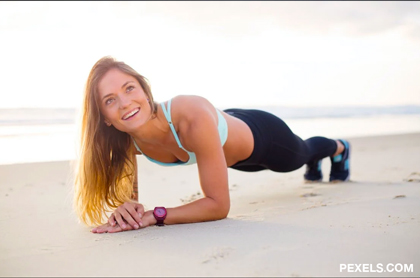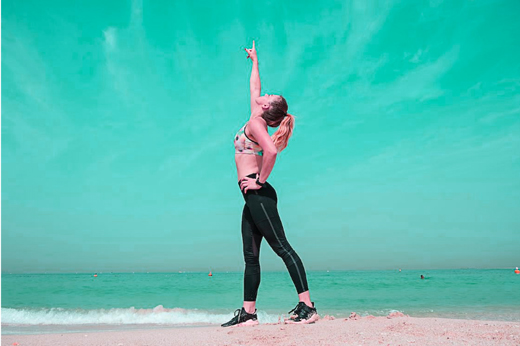Read more
When your glutes are strong, you'll find that it's much simpler to perform things like sit down and stand up, as well as reach low shelves at the supermarket.
Want to maximize your exercise results by include a powerful strength-building move? Squats are a good option. When performed on a regular basis, they can help you gain significant strength, making it simpler to accomplish things like squat down to pick something up off the floor, sit in a chair, and reach for an item on the lowest shelf of the grocery store.
In this article, we will discuss the advantages of including squats into your fitness regimen, when and how to do so, and proper form.
Is there a list of muscles that squats target?
As a kind of exercise, squats are frequently recommended by trainers, but why? Tony Ambler-Wright, CSCS, product manager and master instructor for the National Academy of Sports Medicine (NASM) and coach at the performance training center Movement Edge in Roswell, Georgia, says that "not only is the squat a fundamental movement pattern that has functional carryover to many activities of daily living and sport, but it also challenges and strengthens many muscles."
When you squat, you're using your legs, core, and chest muscles. The quadriceps consist of the rectus femoris, vastus lateralis, vastus medialis obliquus, and vastus intermedium; the soleus is a deep calf muscle; and the gluteus maximus is the greatest butt muscle.
The muscles in your inner thighs, hamstrings, back, and calves all play supporting roles, while the muscles in your core and outer thighs serve as stabilizers to keep you from losing your form.
Doing Squats: What Are the Perks?
These five examples illustrate the point:
The glutes are strengthened via squats. Squats are beneficial to everyone who wants a bigger and better posterior. According to a research published in Yoga & Physical Therapy, such strength can transfer into increased performance in sports that demand running and jumping, as well as those you undertake in your everyday life, especially as you become older. Walking, jogging, and trekking are all made easier by having robust glutes.
Squats are a practical exercise (particularly as you age). Ambler-Wright suggests using squats in your exercise routine to improve functional leg strength and mobility, which may make it simpler to get up from the floor. The relevance of this is unclear. Research published in journals such as the European Journal of Preventive Cardiology suggests that being able to get up from a chair and the floor without assistance may be an indicator of your mortality risk.
Bone density may be increased by performing squats. Squats are a great example of a weight-bearing exercise that can help improve bone density. According to Ambler-Wright, "Squats help make hip and leg bones and joints more robust by improving bone mineral density." It may help reduce the likelihood of bone loss (osteopenia or osteoporosis).
Doing squats will aid with weight loss. More calories are burned when more muscles are used during a workout. According to Jonathan Olonade, a corrective workout specialist and NASM-certified personal trainer at Life Time in Cinco Ranch, Texas, squats definitely meet that need due to their significant caloric expenditure.
It's possible that squats help your brain. The lower body is a fantastic place to start if you want to see benefits for your brain from physical exercise. According to functional MRI examinations conducted up to 12 years later, those with more leg power had less symptoms of brain aging and had a healthier brain structure than those with lesser leg strength, according to a study published in the journal Gerontology.
Can Everyone Do Squats Without Harm?
Squats pose little to no risk of injury to the vast majority of trainees. Nevertheless, there are exceptions to this rule.
According to Ambler-Wright, "there may be variants that may be less suited for particular individuals, based on their medical and injury history, training history and condition, and goals. The pistol squat, the overhead squat, the jump squat, the goblet squat, and the box squat are all squat variations.
Finding a squat variation and progression that you can accomplish without pain or risking a certain issue worsening or injury developing is the key. If you have a knee or hip issue, for instance, you may need to adjust how far apart you stand or how deeply you squat, adds Ambler-Wright. Women who are expecting may need to adapt the dance as well. In case of doubt, it's best to get your doctor's approval before beginning squat training.
When and how often should you be performing squats?
Adults, according to the Physical Activity Guidelines for Americans (PDF), should perform strength training for all major muscle groups on two or more nonconsecutive days each week. Ambler-Wright cautions that the intensity of your squats, the squat variant you choose, your goals, your current fitness level, and the amount of rest and recovery time you require all play a role in determining how often and how many squats you should perform.
If you're in good health, the American College of Sports Medicine (ACSM) (PDF) suggests performing one set of 8 to 12 repetitions, but you may want to perform more if you're trying to increase muscular endurance and fewer if you're attempting to increase muscular strength.
According to ACSM, strength training can be either total-body or split up into upper-body and lower-body days. Whether or not you perform squats (and leg workouts) on cardio days depends on your fitness program and objectives.
Step-by-Step Instructions for a Proper Squat
In order to avoid injury and get the most out of your workouts, you need to learn proper squat technique. To do a simple squat using only your body weight, as described by Ambler-Wright, you need do the following:
Keep your toes pointed forward and your knees directly over your second and third toes as you stand with your feet approximately shoulder-width apart.
The proper way to squat is to bend at the knees and hinge at the hips, making sure that your shins are tracking over your second and third toes while maintaining your heels planted firmly on the floor. Allow your glutes to push back and out behind your body as if you were sitting in a chair. Stand tall with your shoulders back and your head and neck at a right angle to your body. Get down to a depth where you can keep your form while diving. So point may be when one's thighs are parallel to the floor, while another person may not be able to go quite that low.
Using the strength in your feet, drive your body off the floor and back into a standing posture by bringing your hips forward.
Repeat.
















0 Reviews